Walking in the World of “Not so Tall”
Charles Allen Haynes
February 21, 2022
I’m often irritated that I know so little about the wildlife that surrounds me. In 2022 I’ve decided to up my awareness from 10% to maybe 12%. Even that may be ambitious. When I start with bird study, that leads to insects; beetles, butterflies and moths, solitary bees… Then there are the wildflowers the study of which eventually leads to fungi and lichens and on and on. Not gonna run out of stuff.
On a walk at Constitution Lakes last week with the “group,” I encountered a fungus/lichen on a fallen tree trunk. Fuzzy little thing, mushroom like but I couldn’t guess for the record. (It’s okay to guess in private conjecture.) Consequently… I didn’t know what it was. There are lichens that look mushroom-like and, of course, fuzzy mushrooms.
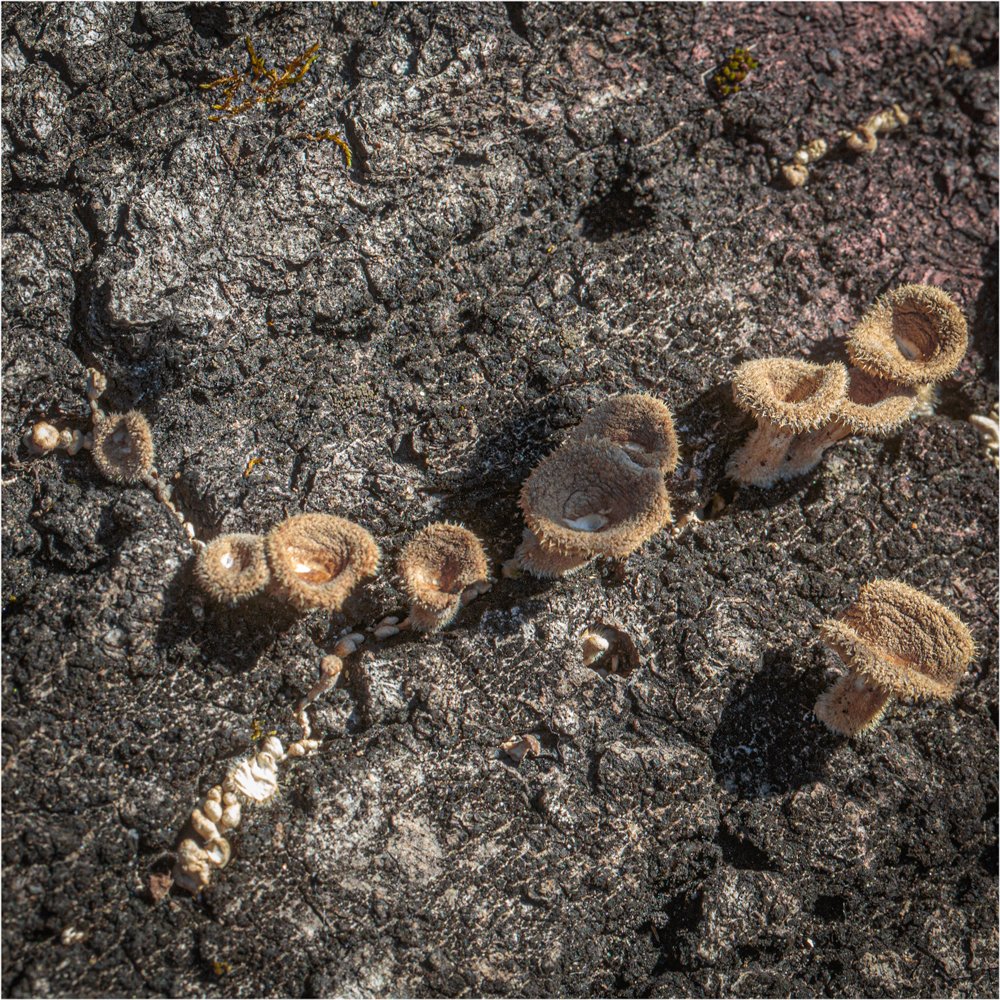
Hairy Trumpet
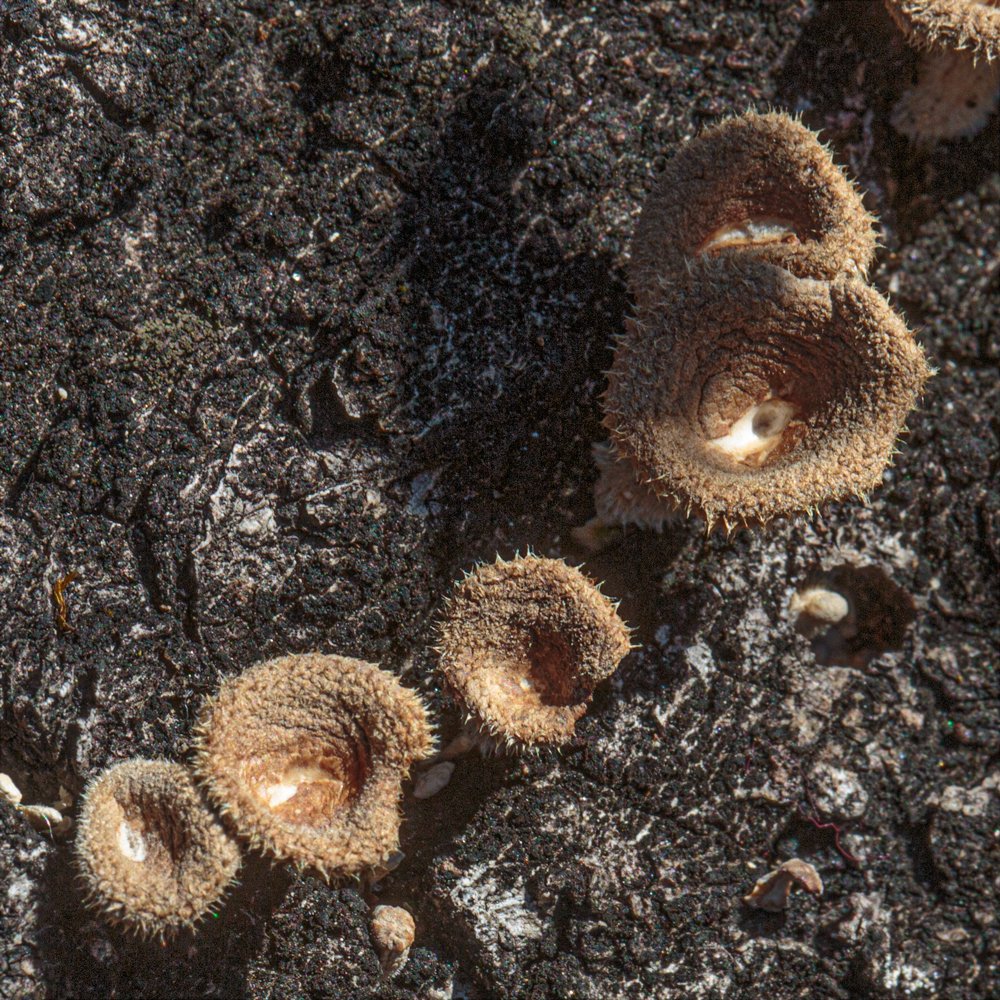
Hairy Trumpet
The first order of business in studying this ONE organism was to try to identify it. I have about 4-5 books on fungi and as many on lichens… hmmm. Also, there’s the internet which for things like this is not bad for a general ID. In addition I sent Malcolm Hodges a message and asked him if he thought this was a lichen. He said he didn’t think so, he thought it was a fungus, mushroom, but not “lichenized.” Dangerous talk. The reason that it was dangerous is because I’ve spent two pretty full days getting back into morphology and taxonomy that I haven’t visited since college, read “lichenized.”
It begins with refreshing my knowledge of the “Kingdoms,” the kingdoms of living things. When I was in college there weren’t eight or nine kingdoms, well there were but they weren’t listed the way they are now. The advent of DNA exploration has changed a few things.
The vocabulary of life begins with eukaryotes and prokaryotes. (Eukaryotes - organisms consisting of a cell or cells in which the genetic material is DNA in the form of chromosomes contained within a distinct nucleus. Eukaryotes include all living organisms other than the eubacteria and archaebacteria [prokaryotes].) Within the eukarotes there are plants, animals and fungi and others but ain’t gonna go there right now, a long way from Linneaus’ world of animal, vegetable and mineral. So we have fungi here. Fungi - latest estimates are that 1.5 Million species exist. Shouldn’t be that difficult to pick this one up. (It wasn’t really if this ID is correct.) Well, we got the kingdom - fungi.
Since I had them under consideration, lichens, incorporate algae, bacteria and yeast and receive their basic structure from fungi. They’re everywhere. I went out in the yard and found 6 or 8 as I walked from the front of the house to the back. There are at least 17,000 species of lichens in the world classified by the fungal structure each incorporates.
Nevertheless I concluded as Malcom had much more quickly that this is a fungus. I found them again at Mason Mill Park. (33.804634 -84.304069) These were a little less “mushroom perfect” but I think they’re the same. As the saga continues we’ll see.
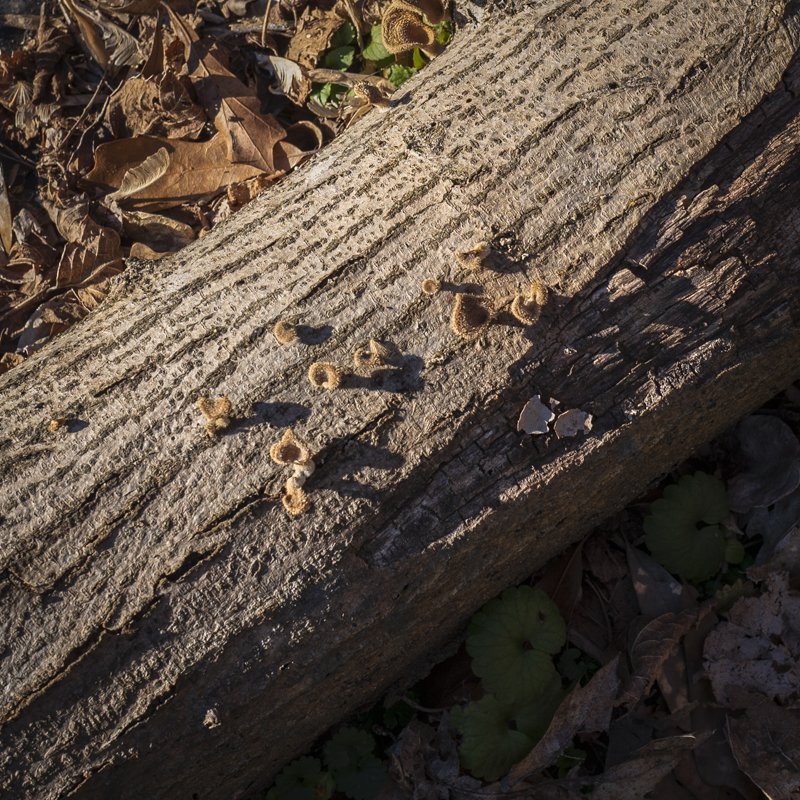
Hairy Trumpet
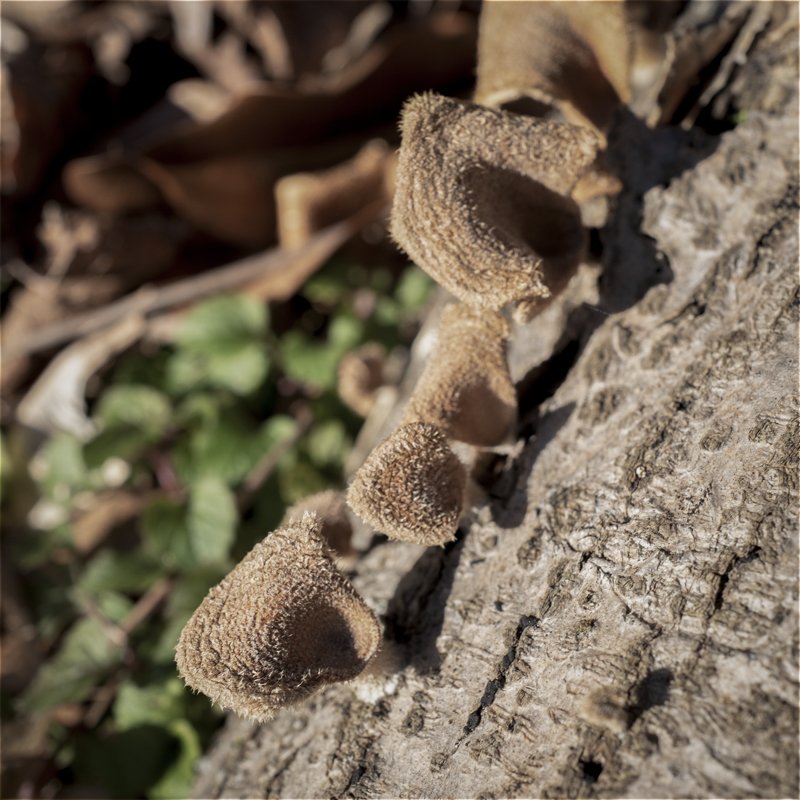
Hairy Trumpet
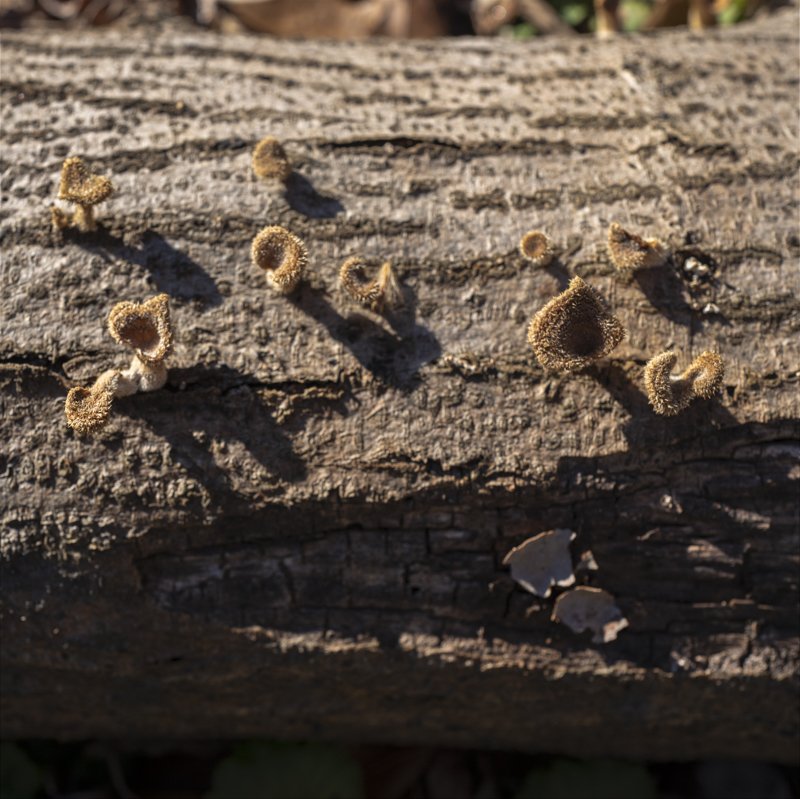
Hairy Trumpet
Taxonomically, if my ID is correct, we have:
Kingdom: Fungi
Sub-kingdom: Dikarya
Phylum: Basidiomycetes
Sub-phylum: Agaricomycotina
Class: Agaricomycetes
Order: Polyporales
Family: Panaceae
Genus: Panus
Species: fasciatus
Unless that’s not correct and then I’ll start all over, well from Polyporales on down, maybe.
Yeah, I know, ONE organism.
Now, what I actually did to try to identify this fungus… I looked through all my “field guides” and text books to no avail. Then I took to the internet. I entered a variety of search terms and when I entered “fuzzy mushroom” ( a really scientific term), I found a look-alike. Funny thing is the photograph that looked most like “my” mushroom was from Australia. I did find a note in the description that the species has been found in the Northern Hemisphere as well as Australia. If I’m not wrong on the ID then I found two instances of this fungus in Atlanta in the same week 8 miles apart.
This recounting is of a rather haphazard identification method. In the future I want to seek a more straightforward key and use that.